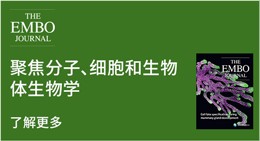Theatre Journal ( IF 0.8 ) Pub Date : 2024-07-23 , DOI: 10.1353/tj.2024.a932175 April Sizemore-Barber
Reviewed by:
- National Arts Festival
- April Sizemore-Barber
For nearly half a century, South Africa’s National Arts Festival (NAF) has been the premier platform for the artistic state of the nation. Its most recent outing in 2023 marked a hearty post-pandemic rebound, with ticket sales doubling from the previous year’s initial tentative return to live performance. At the same time, COVID’s long interregnum also allowed the festival’s organizers to take stock and adjust the status quo, most notably by substantially curtailing the number of productions featured on the fringe program. This contraction marked a striking departure from the fringe’s previous centrality to the festival’s identity and branding as the second largest after Edinburgh’s. The decision was at its root pragmatic: plagued by years of nationwide rolling blackouts (also known as load-shedding) interrupting performances, the NAF would now limit all performances to venues with a backup generator. Nevertheless, this ethos of strategic contraction had a galvanizing effect on the eleven-day festival as a whole. In prioritizing smaller-scale, local stories and idioms over spectacle and size, the festival thrived with a tighter, more personal focus. Playing to its strengths of combining multiple forms and incubating new voices, 2023’s festival strikingly foregrounded work by Black feminist artists, often working in Indigenous languages.
A broader trend toward responsive, genre-bending, site-specific performance was apparent in the work of the winners of the prestigious Standard Bank Young Artist Awards. Given a platform at the festival to execute their visions, the winning artists—and their work—provided a model for how constricted performance aesthetics can often inspire spatial reimagination. As an illustrative example, three of the six artists honored—all Black women—staged performance installations at the hulking Settlers Monument complex, a location where generators could be depended on to keep the lights on. Lady Skollie, an Indigenous artist of Khoi descent, used the apartheid-era arts center built to memorialize British colonizers to interrogate the absence of her ancestors from the historical and artistic record. Transforming the bowels of the building into an exhibition of Indigenous rock art, which has largely been destroyed in South Africa, Groot Gat (Big Hole) re-created cave art in situ. The result—referencing capitalist extraction in the famed Big Hole Kimberly diamond mine while also celebrating women’s vaginas as a creative force— served as a South African iteration of the Great Hole of History (introduced in Suzan-Lori Parks’s The America Play). Rather than depicting the artform as a static ethnographic relic, Skollie’s cave paintings vividly imagined a matriarchal origin story for the Khoi, South Africa’s original people.
Several floors above Groot Gat, recording artist Msaki’s Del’ukufa (Dare to Die) spoke to a similar sense of displaced trauma. Playing to a packed audience in a single gallery, the intervention was the first in a series of site-specific public rituals that Msaki staged throughout the festival. Msaki circled and anointed a mound of red soil adorned by candles, crosses, and cattle skulls that evoked the colonial violence marking the Eastern Cape landscape. Her soaring soprano was accompanied by a musician on a straw mat and some smoldering imphepho herb, which is used in ancestral communication: Ndiyozilanda! (roughly, “I am returning to collect my things”). The visuals, sounds, and smells combined to take the audience on a multisensory metaphysical journey, all while standing still. The call evoked a spontaneous, embodied response in three-part harmony from those assembled, as Msaki’s use of aural histories suggested the possibility of both personal and collective healing.
On the ground floor, poet and performer Koleka Putuma invited audiences into her multimedia gallery installation, a meditation on substance abuse in the Black community and the restorative possibilities afforded by Indigenous medicines and psychedelics. Despite being titled A Theatre of Beauty: Imvuselelo (The Revival), Putuma’s installation was less obviously theatrical than her acclaimed solo performance Hullo, Bu-Bye, Koko, Come In, one of the most memorable outings at the NAF in 2022. Yet such fluidity of form and resistance to easy categorization served as...
中文翻译:

全国艺术节(回顾)
以下是内容的简短摘录,以代替摘要:
审阅者:
- 全国艺术节
- 阿普丽尔·塞兹摩尔·巴伯
全国艺术节。南非马坎达。 2023年6月22日至7月2日。
近半个世纪以来,南非国家艺术节 (NAF) 一直是展示国家艺术状况的首要平台。最近一次演出是在 2023 年,标志着疫情后的强劲反弹,门票销量比前一年最初试探性恢复现场演出时翻了一番。与此同时,新冠疫情的长期空白期也让电影节的组织者得以盘点并调整现状,最引人注目的是大幅削减边缘节目的作品数量。这次收缩标志着边缘音乐节之前的中心地位与爱丁堡音乐节之后的第二大音乐节的身份和品牌的显着背离。该决定从根本上讲是务实的:由于多年来全国范围内轮流停电(也称为减载)中断了演出,NAF 现在将所有演出限制在配有备用发电机的场地。尽管如此,这种战略收缩的精神对整个为期十一天的节日产生了激励作用。由于优先考虑小规模、当地的故事和习语,而不是奇观和规模,这个节日以更严格、更个人化的关注而蓬勃发展。 2023 年的音乐节发挥了结合多种形式和孵化新声音的优势,引人注目地突出了黑人女权主义艺术家的作品,这些艺术家通常以土著语言创作。
在著名的标准银行青年艺术家奖获奖者的作品中,反应灵敏、跨流派、针对特定地点的表演的更广泛趋势显而易见。凭借节日的平台来实现他们的愿景,获奖艺术家及其作品为狭隘的表演美学如何激发空间重新想象提供了一个模型。作为一个说明性的例子,六位获奖艺术家中的三位(全是黑人女性)在庞大的定居者纪念碑综合体上演了表演装置,在那里可以依靠发电机来保持灯光。斯科利夫人是一位科伊族后裔的土著艺术家,她利用种族隔离时代为纪念英国殖民者而建的艺术中心来质疑历史和艺术记录中她祖先的缺席。 Groot Gat(大洞)将建筑物的内部改造成土著岩石艺术展览,这些岩石艺术在南非大部分已被毁坏,Groot Gat(大洞)在原地重新创作了洞穴艺术。其结果是借鉴了著名的 Big Hole Kimberly 钻石矿中的资本主义开采,同时也颂扬了女性阴道的创造力,成为南非历史大洞(Great Hole of History)的翻版(在苏珊·洛里·帕克斯(Suzan-Lori Parks)的《美国剧》中介绍过)。斯科利的洞穴壁画并没有将这种艺术形式描绘成静态的民族志遗迹,而是生动地想象了南非原住民科伊人的母系起源故事。
在格鲁特·盖特楼上几层楼,唱片艺术家姆萨基的《敢死队》讲述了类似的流离失所的创伤感。这次干预是在一个画廊里向挤满观众的观众演奏的,这是姆萨基在整个音乐节期间举办的一系列针对特定地点的公共仪式中的第一个。姆萨基围绕并涂抹了一堆红土,土堆上装饰着蜡烛、十字架和牛头骨,让人想起东开普省风景中的殖民暴力。她高亢的女高音由一位坐在草席上的音乐家和一些闷烧的 Imphepho 草药伴奏,这种草药用于祖先的交流:Ndiyozilanda! (粗略地说,“我要回来拿我的东西”)。视觉、声音和气味相结合,让观众在静止不动的情况下踏上多感官的形而上学之旅。这一呼吁引起了与会者的自发、具体的三部分和谐反应,因为姆萨基对听觉历史的运用表明了个人和集体治愈的可能性。
在一楼,诗人兼表演者 Koleka Putuma 邀请观众参观她的多媒体画廊装置,这是对黑人社区药物滥用以及土著药物和迷幻药提供的恢复可能性的沉思。尽管名为《美丽的剧院:Imvuselelo》(复兴),普图玛的装置作品并不像她广受好评的独奏表演《Hullo、Bu-Bye、Koko、Come In》那样明显,这是 2022 年 NAF 最令人难忘的演出之一。形式的流动性和对简单分类的抵制充当了......


















































 京公网安备 11010802027423号
京公网安备 11010802027423号